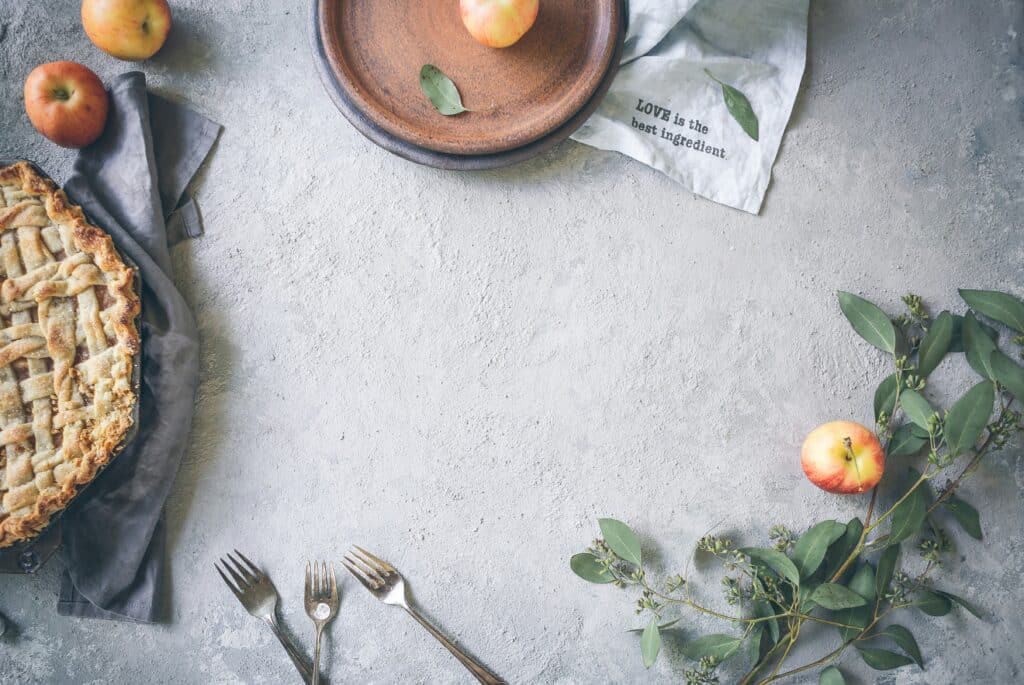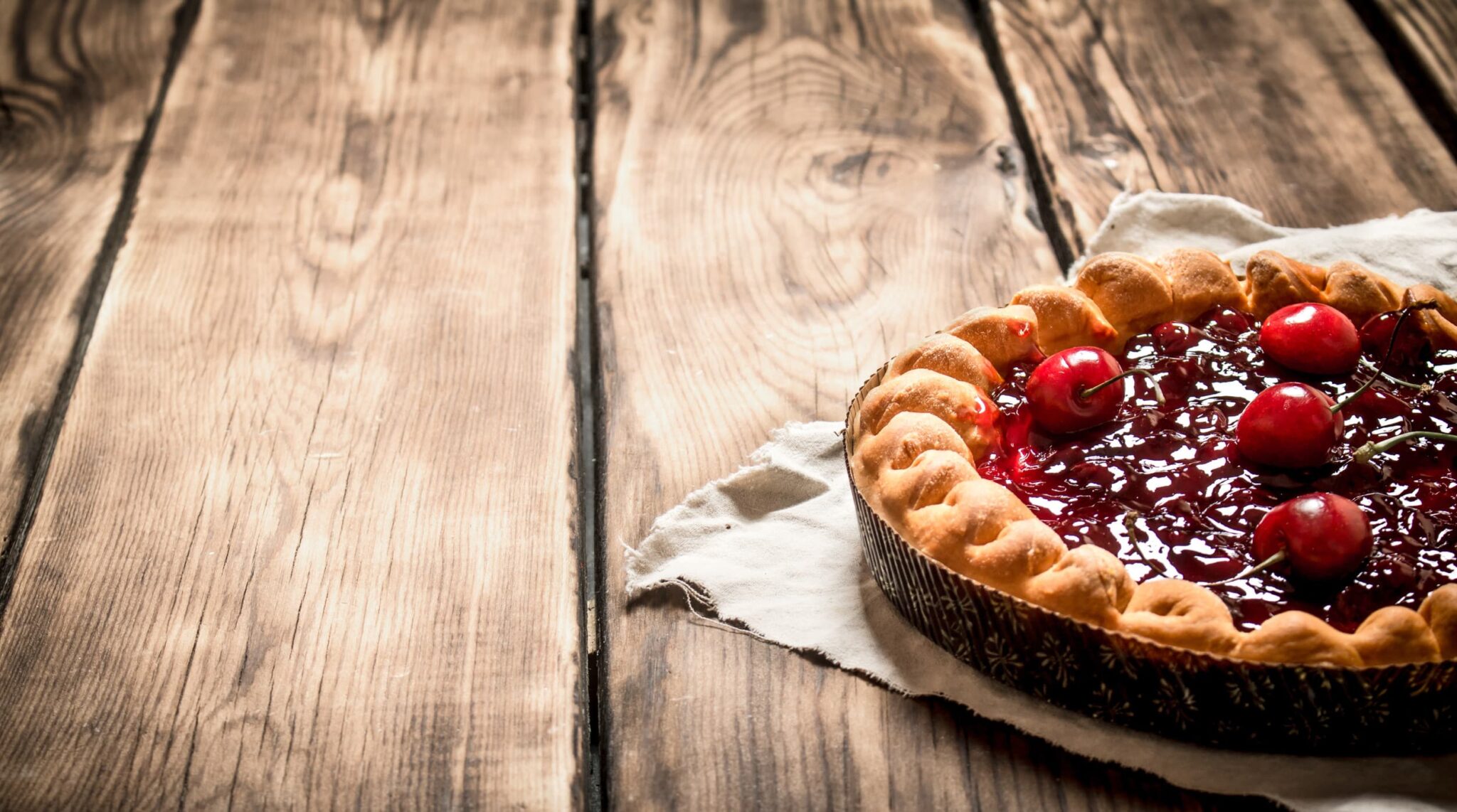When Lent was nearly over and it was time to begin our journey to Louisiana’s Pie Day, we rounded up our boys and shooed them into the back of the van. It had been outfitted with an old mattress, blankets, pillows, crayons and cookies. Then, leaving Minnesota, we headed out for pie.
Who, but a Frenchman with Louisiana ties, would haul five children and an Irish wife 2,400 miles, round-trip, for pie?
But it was not just any pie. It was Louisiana Sweet Dough Pie, and it is served only once a year—on Good Friday.
The Acadians
Deep in Acadiana, through the woodlands and bayous that spread like ancient fingers through southern Louisiana, live the most interesting Americans this northerner has ever met. They call themselves Acadians or Cajuns.
When the time had come to venture south, the children and I were filled with excitement. The thrill was multifaceted. One, we finally owned a vehicle dependable enough to make such a trip; and two, we would escape, scot-free, the last hurrah of a Minnesota winter. Instead of hunting for Easter eggs in the snow, we would bask in the warm breezes that drift up from the Gulf of Mexico.
It was the Friday before Palm Sunday when we departed, and Pie Day was seven short days away. The kids experienced real-world connectedness when we encountered places whose names they had only seen in books—the Missouri River, the Ozark Mountains, Kansas City. We were nearly giddy traveling with the windows rolled down as we gulped that southern air, saturated as it was with the taste and smell of mildew.
Magnolia trees—their scent easily finding us—and azaleas bursting with color lined the roadways. Tiny cafes that appeared to sprout from the sides of filling stations dotted the side streets and drew folks from as far away as Houston with their signs (some larger than the buildings) advertising “Crawfish and Boudin [sausage].”
As the sun rose, we saw the rice paddies spread across the horizon, and we knew that by autumn the burning sugarcane fields would fill the air with a caramel scent. Spanish moss floated above the roadway through Grand Coteau; like silken flags of green netting, it swished over the van’s roof. The boys reached out the windows to catch a fistful, but we were flying too quickly. We could taste the pie as soon as we crossed the Arkansas border; like a horse heading for the barn, our sights were set. We were unstoppable.
A Lenten Experience Begins
We had barely pulled into Grampa Paul Begnaud’s place in Scott, Louisiana, when things grew even stranger. Arriving in town with zero hours of sleep under our belts, we were hightailed over to Fred’s Lounge in Mamou for our first round of Bloody Marys on empty stomachs.
An hour later, we raced to Café Des Amis in Breaux Bridge where we ordered Eggs Begnaud. As we ate the eggs named for my husband’s lineage, zydeco musicians took the stage: fiddlers (the primary instrument of Cajun musicians), followed by metal washboard players, accordions, harmonicas and an occasional guitar.
Suddenly, the tables emptied, and the old wooden floors swooped with the weight of the dancers and their stomping. I saw that we were the only ones not properly shod in cowboy boots.
The spiritual roots of the music showed like a slip under the hem; French and English jumbled together, strains of praying the Ave Maria mingled with lyrics about a woman who is either warm and soft and fat, or a good-for-nothing who has left her man. For Cajuns, the music, like their religion and food, defines the people to such an extent that it can no longer be unknitted. Nor would they have it any other way.
The Birth of a Tradition
Most agree that Pie Day originated in France as Jour de Tarte in the middle of the 12th century, when the belief prevailed that all work performed on Good Friday, including cooking, was forbidden. Consequently, all food preparation had to be done on the previous day. In the years before refrigeration, fruit pies were prepared so that spoilage would not be a concern.
In recent years, Acadians have adopted the belief that since Lent ends with the start of the Triduum on Holy Thursday evening, consuming pie on Friday is no longer sinful in itself. It is further argued that because only one meal is allowed on Good Friday, the Cajuns present one meal that lasts from six to eight hours.
The Acadian tradition of Pie Day has mutated slightly from one Louisiana village to another. Forty miles east of Scott, on the southern end of the Atchafalaya Basin, folks of Catahoula also honor Good Friday with Pie Day, though they offer crawfish pie as well as fruit pies. In Catahoula each family brings pies to share with the larger group.
By contrast, in Scott visitors do not contribute pie to the feed. All pies are prepared and baked by the host family, and hosting takes place in one of the Begnaud family homes. Grampa Paul and his sister, Ruth Richard, have hosted for the past 15 years. Before that, their mother, Letha (pronounced Lee-Tay) Begnaud, hosted for 50 years and her mother before for another 50 years.
And, though the people of Scott and Catahoula share the passion of keeping the tradition alive, young people are grabbing hold and promising to carry on the practice. Cousin Drew Landry, a well-known musician and filmmaker, produced Pie Day (A Documentary), which was shown in 2008 at University of Louisiana at Lafayette to critical acclaim.
According to the late Dr. Patricia Rickels, UL Lafayette professor and highly regarded scholar in the field of folklore, “Do-it-yourself-Catholicism evolved in southern Louisiana over the past two centuries because there were not enough priests to serve the people—though nearly everyone in the territory was Catholic.”
In many villages, outdoor Stations of the Cross (each plaque carved of cypress and nailed to a tree)are prayed. In the old days, women situated their pie offerings around the 11th or 12th station so that folks could eat pie before going to Confession.

In the old days, women situated their pie offerings around the
11th or 12th station so that folks could eat pie before going to Confession.
For years, the Catholic priests did all they could to stop Pie Day, due to the sinfulness of folks breaking their fasts for pie—although old-timers tell stories of these very priests sneaking into many a housewife’s kitchen, using hidden back doors, to have a piece of the achingly delicious pie just to keep their strength up for the long afternoon of hearing the town’s myriad sins.
Today, local priests join in and often lead the ritual stations. Crowds process, pray aloud and carry little prayer books and rosaries. The young and able walk quietly, and the elderly ride in slow-moving hay wagons. The stations are spaced a mile long, with the 14th plaque—Jesus is laid in the tomb—nailed to a tree just outside the church entrance. It is conveniently located so that folks can enter the church for Confession after completing the stations.
Holy Week
The day after we sinned at Fred’s in Mamou (alcohol before dinner?) was Palm Sunday, the kickoff to Holy Week, and my favorite week of the year. A whirlwind of music and liturgies and reenactments and readings lay ahead.
On Holy Monday, we prepared Louisiana-style Easter eggs. Small squares of silk—multicolored paisleys and flowers and iridescent solids—were wrapped and then sewn tightly around each uncooked egg, followed by a second layer of cushiony terry cloth to prevent cracking.
When the children weren’t looking, Grampa hid surprises under the silk: pieces of clover, miniature leaves and tiny wings of butterflies. As the eggs were cooked, the dye from the silk leached onto the eggshells creating intricate designs. The foreign objects, such as the items hidden by Grampa, left white outlines on the eggs.
On Tuesday, we polished silver and washed hundreds of pie tins, china cups with matching saucers and dessert plates until our fingers ached with stiffness.
By Wednesday evening, the women began arriving—dozens of them—and soon filled Great-Grandma Letha’s kitchen. Huge sacks of flour and sugar, jugs of buttermilk and jars of vanilla were lined up against one wall. Boxes of pie tins were hauled in; rolling pins, aprons, hand-cranked beaters and electric mixers stood on the countertops as though preparing for battle.
After the equipment was lugged in by the women and their husbands, most took a quick shot of Rebel Yell and called it a night. Tomorrow, promptly at sunup, they would begin the baking of the pies. The goal this year was 150 pies, all of which would be baked on Thursday and eaten on Friday.
Let the Pie-Making Begin
Early Thursday morning, on the day of Our Lord’s Last Supper, I hurried down the narrow little road to Letha’s, a road built up by layers of fill. I looked on either side into the deep ditches running along the road, hoping to spot a small alligator that might have made its way from the bayou.
Letha’s kitchen was filled with the language of the Cajuns—a chatter that vacillates between French and English, words tinged with both European and American southern accents. Someone handed me an apron and a tiny cup of dark, dense French coffee heavily laced with full-bodied cream just taken from the cow’s teat that morning.
Then suddenly the making of pies began, and the air filled with a cloud of white flour. Like a well-rehearsed ballet, the heavy wooden table was slapped with oilcloths and plastic guides for rolling perfect circles of dough.
Eight women, those who obviously held to their seniority, surrounded the table and staked out their territory. These were, generally, the oldest women present; the protégés were their daughters and daughters-in-law.
Orders were issued with utmost femininity: “More flour, please,” or “Mon cheri, hand Mama another jar of vanilla.” And though everyone used the same recipe, they argued vehemently about whose mother or great-grandmother had originated the recipe for the crust (similar to shortbread).
A tower of bowls was soon stacked, each filled with dough awaiting the rollers.
Others stirred the fig, blackberry and custard fillings. All work, including the baking, had to be completed by 7 p.m. in time to discard aprons for clean dresses and arrive at St. Peter’s for evening Mass. It was the feast of the Last Supper, Passover and the First Eucharist. And after that Thursday evening holy meal, there would be no more Eucharist offered until Our Lord rose from his grave Sunday morning.
The immediate neighborhood included several other homes, some with two kitchens apiece, so we had nearly a dozen ovens going up and down the road. Pies were assembled and runners, who were often retired menfolk or teenagers out of school on holiday, were sent scurrying with the raw pies to find open ovens.
After the pies were baked, they were quickly removed and new pies slid into the ovens. It was a relay race of folks crossing over lawns and hollering greetings and laughter to one another, carting pies to and from Letha’s house. Once the pies were done, they were set on every conceivable horizontal surface to await Pie Day.
By the time Mass began on Thursday evening, 150 pies had been baked. The scent was unbearably mouth-watering. Each pie was covered by dish towels, handkerchiefs or pillowcases—whatever we could find. Pies hovered atop the refrigerator, the countertops, the buffet, the top of the toaster, the coffee tables and end tables, the fancy furniture in the parlor, the organ, the guest bathroom countertops, atop the television and books on the bookshelves (which was precarious because no one had bothered to level the books).
My boys, covered by then with sheep wool and rooster feathers from the back corral, looked on with greedy mouths. Letha shooed them out of the house to go bathe for Mass.
The Feast Begins
When Pie Day arrived on the morning of Good Friday, it was almost as exciting as Easter. Hundreds of folks from the shops and farms around Scott came in and out of Letha’s house all day long. From sunup until 3 p.m., they ate pie and sipped the dark, French coffee. Then at 3, when Our Lord gave up his life, the town emptied into the church.
The pie was sinful and we knew it. We knew we should not be enjoying such goodness on Good Friday. We should have been fasting and mourning our Savior’s death. We should have been repenting.
And yet I cannot help but think that if Jesus were walking down the built-up roads through the bayous and swamps of southern Louisiana that day, he would have passed by Letha’s and the scent would have drawn him in. He would have loved a piece of that melt-in-your-mouth heavenly goodness. He would have savored the tradition, the work that called together so many in the village, so many hands and legs working together.
He, too, would have tapped his toe to the sounds of fiddlers’ tunes wafting out of open windows. Sure, there was some minor sinning going on—juicy gossip interspersed with prayers and the occasional off-color joke bandied about. Some of the men sat outdoors and smoked pipes and told stories. But the place was so filled with a spirit of togetherness and neighborliness and a kind of looking out for one another, that I feel certain Christ himself might have asked for a second helping.
Louisiana Sweet Dough Pie
(Makes 5 pies)
Whip 2 eggs and 2 cups of sugar until creamy. Blend in 1 tsp. each of baking soda, baking powder and vanilla. Add 1 cup of oil and 1/2 cup buttermilk. Mix well. Add five cups flour, stirring well after each cup. Do not overmix or dough will get tough.
Roll dough 1/4-inch thick and drape over pie tin, leaving two inches “flopping” over edge of tin. Add filling of choice (precooked). Pick up flaps of dough, pull back over filling—creating a one-inch collar all around outer edge of pie. No top crusts are needed. Latticework optional.
Bake at 375-400 degrees until crust is golden.









1 thought on “Pie Day: Louisiana’s Lenten Custom”
Such an awesome article by Kathy Begnaud! I had the pleasure of joining Mr. Paul & family for several celebrations….and renting an apt. ‘upstairs’ for awhile. One day, Mr. Paul’s son Mark banged in my door and said “we need your oven”! I then commenced in helping with that particular Pie Day ~ so much fun ~
Of course, I had to go help make pies!
Such great memories!